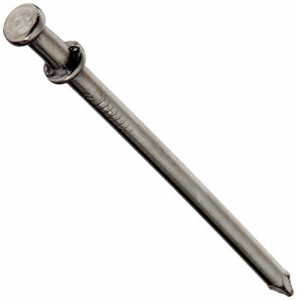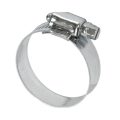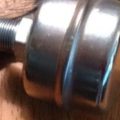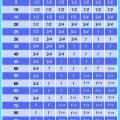Hey! This site is reader-supported and we earn commissions if you purchase products from retailers after clicking on a link from our site.
Duplex nails are very common nails found in temporary structures such as scaffolding. They go by a few different names, and so, this article will provide you with all the relevant information on duplex nails and whether you can use them with compressed air.
Table of Contents
- What Are Duplex Nails?
- What Are Duplex Nails Used For?
- Duplex Nail Sizes
- How to Install & Remove Duplex Nails
- Using Duplex Nails with Compressed Air
- FAQs (Frequently Asked Questions)
What Are Duplex Nails?
A duplex nail, or commonly referred to as double-headed nails, is the typical nail choice for projects that involve quick nailing like construction scaffolding, form work and temporary braces. Duplex nails are as strong as your normal more common nails, but they feature two heads so that they’re capable of being removed far easier.
These types of nails are driven into wood up to their first head, which leaves a small bit of the nail and the second head sticking out. Therefore, all you need to do is use the reverse end of a claw hammer to remove the duplex nail with ease.
Duplex nails get their name from the two layers of head on the nail that keep them from being driven completely into surfaces. Though this may seem odd, it’s not if you want to pull the nail out in the near future. For instance, scaffoldings are generally only temporary fixtures, so these types of nails are often used and then reused. Forms for foundations and temporary hurricane barriers over windows are other common uses for duplex nails.
Duplex nails were often referred to as scaffolding nails too because they were typically the first choice of nail for easy to disassemble temporary wood scaffoldings. When metal scaffolding replaced wooden scaffolding, the names duplex nail and double-headed nail became the more popular ones.
Here’s an example of a duplex nail available on Amazon!
- 3-1/2-inch 8-gauge (3-inch length under lower head) top head 9/32-inch; lower head 11/32-inch
Prices pulled from the Amazon Product Advertising API on:
Product prices and availability are accurate as of the date/time indicated and are subject to change. Any price and availability information displayed on [relevant Amazon Site(s), as applicable] at the time of purchase will apply to the purchase of this product.
What Are Duplex Nails Used For?
Duplex nails are often used for temporary projects because they can easily be removed with the claw of a hammer. In concrete pouring projects, double-headed nails are often used to fasten wood forms while the concrete is being poured.
Once the concrete has hardened, the wood forms can be easily taken apart with the claw of a hammer, pulling the nails out by the protruding second head of each nail. Something that would not be nearly as simple as other forms of nails. The double-headed nails are removed in a similar manner when wooden scaffolding projects are completed.
Double-headed nails are normally used to build these temporary structures mentioned because they don’t go all the way into the wood while being very easy to remove. However, these nails can be used for anything that you build temporarily, where you know you will be removing the nails at some point down the line.

Duplex Nail Sizes
Duplex nails come in the following six sizes:
- 6d
- 8d
- 10d
- 16d
- 20d
- 30d
And these duplex nails range from 1” to 4” in length. The distance between the two nail heads ranges from ¼” to 7/16” and this generally increases in length as the nail’s overall length increases.
The diameter range of a double-headed nail ranges from .113 to .207 inches.
How to Install & Remove Duplex Nails
When hammering a duplex, or double-headed nail, drive the nail into the wood like a regular nail, specifically up to the first head. The second head will remain visible outside the wood.
To remove the nail, insert the reverse end of the standard claw hammer between the two heads. Pull the hammer toward you in a downward motion to release the nail from the wood with ease.
Using Duplex Nails with Compressed Air
A common question posted across the internet is people asking, can you use pneumatic nail guns for duplex nails? It may seem a bit overkill if the duplex is only going to be in temporarily. No pneumatic nail gun, whether that be a framing gun or brad nailer, is designed to shoot duplex nails.
You may be able to reduce the pressure on the nail gun if the duplex nail attaches, and shoot the nail so that the head sticks out 1/4″, otherwise the nail gun under its normal operating pressure may shoot the duplex nail too far in (where the first head enters the material) and damages your workpiece.
The best tool to use for the job is a cordless Duplex nailer which is designed for duplex nails and will offer a massive productivity boost vs. hand driving duplex nails, or trying to get your pneumatic nail gun to fire them.
- AWARD: 2020 Pro Tool Innovation Award Winner for Duplex Framing Nailers
Prices pulled from the Amazon Product Advertising API on:
Product prices and availability are accurate as of the date/time indicated and are subject to change. Any price and availability information displayed on [relevant Amazon Site(s), as applicable] at the time of purchase will apply to the purchase of this product.
This tool can save you valuable time on projects, allowing you to move quickly while building concrete forms and scaffolding, driving up to 16D duplex nails.
Other nail gun related pages you may be interested in reading:
- Types of Nail Guns Guide – Brad Nailers And More
- Nail Gun Not Shooting Nails – Nail Gun Just Blows Air
- What Size Air Compressor For Nail Gun – Framing Nailer, Brad Nailer, Finish Nailer & More
- Best Air Compressors For Nail Gun
- Using a Portable Air Tank For Nail Gun – Example
- Pin Nailers Explained
- Siding Nailers Explained
- Palm Nailers Explained
- Brad Nailer vs Finish Nailer
- Brad Nailer vs Framing Nailer
FAQs (Frequently Asked Questions)
Double-headed nails are often used for temporary structures because they can be removed easily and then reused. They are frequently found holding wooden scaffolding together and are used to fasten wood forms while the concrete is being poured in concrete pouring projects.
2 headed nails are often called duplex nails or double-headed nails. They did, however, use to be referred to as scaffolding nails until scaffolding changed from wood to metal.
An 8D duplex nail is an 8-penny nail, and these typically have a length of around 2 1/4″ to 2 1/2″.
If you have any questions regarding duplex nails, please leave a comment below, with a photo if applicable, so that someone can help you!







